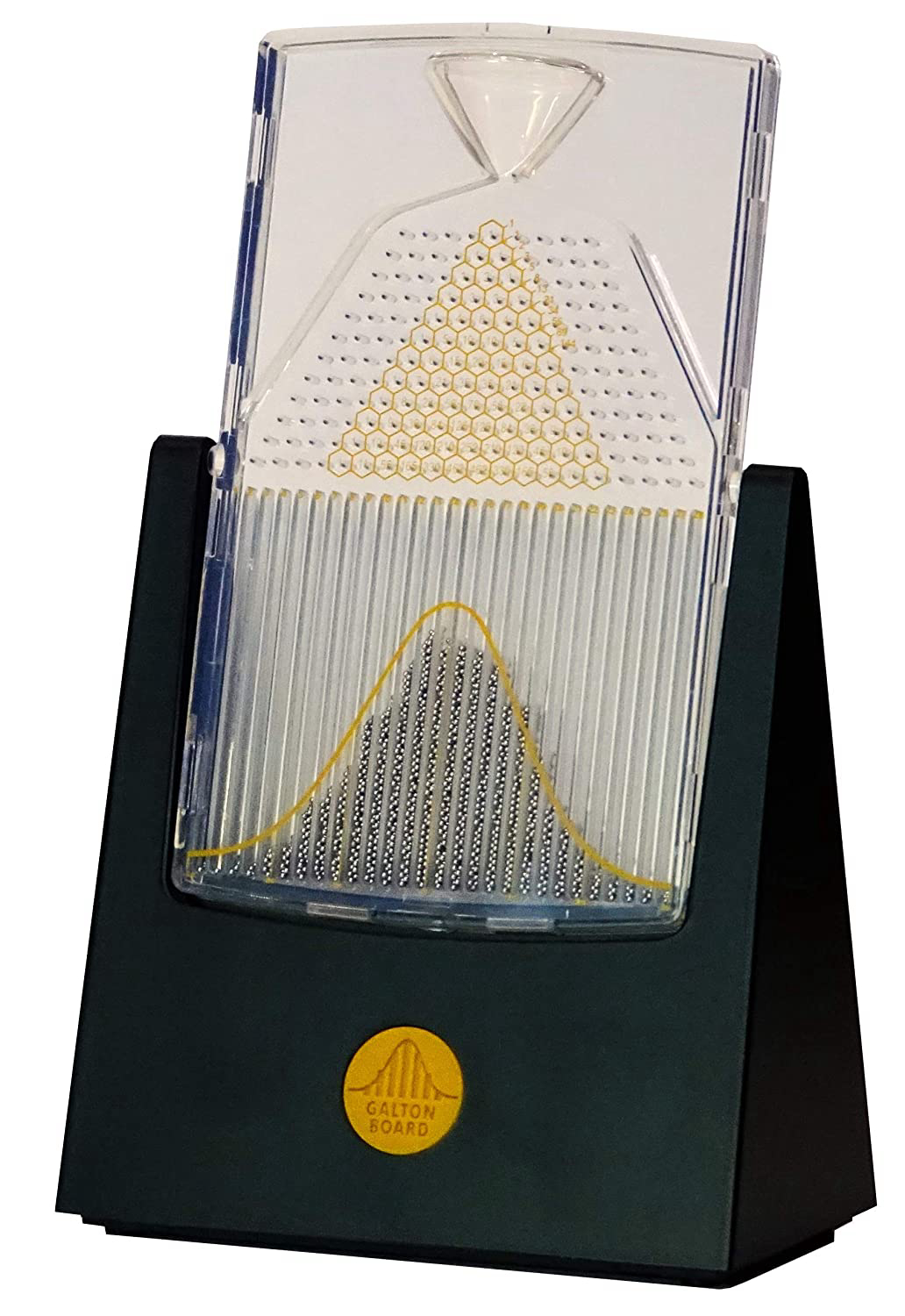Galton Board
The Galton board, also known as a quincunx or the bean machine, is a device invented by English scientist Sir Francis Galton for statistical experiments. The board has a bunch of evenly spaced pegs and slots. Whenever turning the Galton board upside down, all of the marbles fall through those pegs and are randomly located in those slots.

The pegs on the Galton board are arranged in a triangular pattern. As a marble reaches peg number one (first turn, it "decides" to go left or right. Once it goes in one direction, it reaches the second turn and makes another decision. For each turn, there is a 50% chance of choosing the left or right path.
Let's repeat this experiment by using this Polypad canvas. We will use coins to make the decisions randomly.
You can repeat the experiment as many times as you wish.
How do your results look like? Do they change if you repeat this simulation many times?
We do not know where each one of those marbles goes but we can estimate what kind of shape they will form together by writing the sample space (all possible paths a marble can follow) and calculating the probability of where each path ends up.
Here is another canvas where we can calculate the theoretical values of each slot. The Right, Left, Left, Left "RLLL" route is shown as an example. It is better to follow systematic approach when writing all the possible routes.
What did you realize about the numbers of marbles for each slot?
Let's add one more row the Galton Board.
How did the distribution change? Can you write the values for the larger Galton Boards without writing the sample space?
Regardless of the size of the Galton Board, more marbles will be located around the center than the edges. This is the called the binomial distribution. When we have about 3000 marbles, we can approximate the normal distribution. The normal distribution is sometimes called a bell curve because it resembles an actual bell shape.
You may have recognized the rows of the Pascal Triangle showing up here! We can use these patterns to write the values without writing each and every outcome. The row number to observe depends on the number of turns (number of decisions) in total.
Further Exploration
On this canvas there is a barrier to block some of the paths! What happens to the distribution? How are the marbles distributed in each case now?
With the location of the barrier, the marbles can be spread out more to the left or to right. Like in these examples, when the probabilities are not even, we get a "skewed" version of the normal distribution.